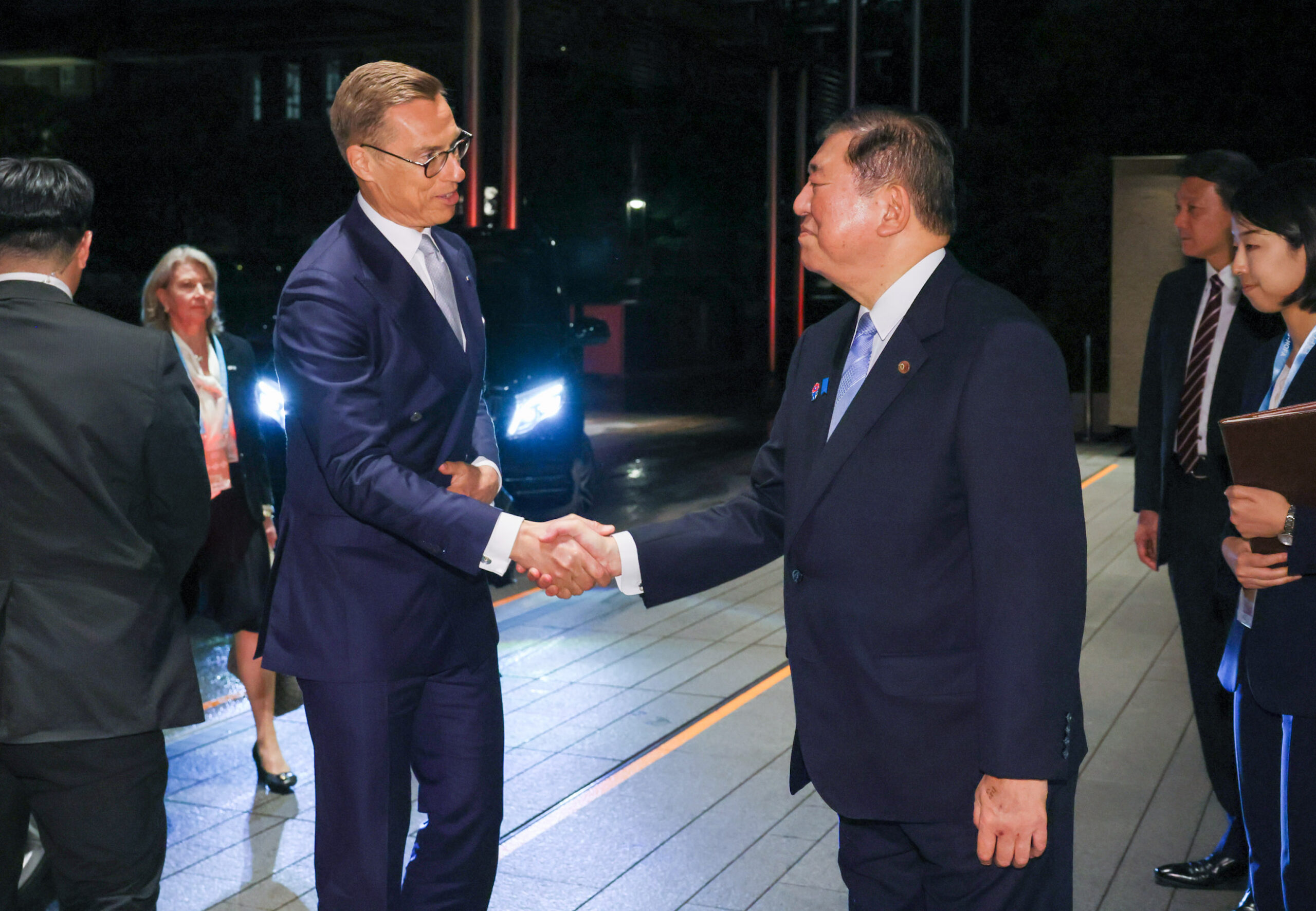On the sidelines of the United Nations General Assembly in New York, Japanese Prime Minister Shigeru Ishiba and Finnish President Alexander Stubb announced a Joint Statement on Reinforced Cooperation, charting a roadmap for deeper collaboration in defense, technology, trade, and diplomacy.
At a moment of geopolitical strain — from Russia’s war in Ukraine to tensions in the Indo-Pacific — the partnership between Tokyo and Helsinki underscores how democracies from distant regions are aligning to defend shared values and bolster security.
Defense Cooperation: From Blueprints to Deployment
Defense ties have already moved beyond symbolism. Japan recently selected the Armored Modular Vehicle (AMV) built by Finnish company Patria as its next-generation wheeled armored vehicle, with deliveries underway.
For Tokyo, the procurement marks a diversification of defense supply chains and an embrace of European expertise to strengthen the Self-Defense Forces. For Helsinki, which joined NATO in 2023, it reflects a growing role as a global security provider beyond its immediate region.
Both leaders emphasized that European and Indo-Pacific security are interlinked. Russia’s aggression in Ukraine and rising tensions around Taiwan, they said, represent part of a broader challenge to international norms.
Cybersecurity and Emerging Technologies
The partnership also extends to the digital realm. Facing rising cyber threats, Japan and Finland pledged closer cooperation on cybersecurity, artificial intelligence, quantum computing, and secure networks. Joint research and development initiatives are expected, aimed not only at countering attacks but also at keeping both nations at the forefront of innovation.
Critical Minerals and Supply Chain Resilience
Ensuring access to critical minerals emerged as another priority. These resources underpin industries from semiconductors to renewable energy, yet supply chains remain vulnerable to geopolitical pressure, especially from China. Finland’s mining expertise and natural resources complement Japan’s advanced manufacturing, creating opportunities for cooperation in extraction, processing, and recycling.
Standing Firm on International Law
The joint statement carried unusually direct language, condemning unilateral attempts to alter the status quo by force. Explicit references to the South China Sea, the East China Sea, and the Taiwan Strait underscored a shared view that challenges to international law in one region resonate globally.
For Japan, Finland’s alignment strengthens its argument that safeguarding rules-based order is not just a regional concern. For Finland, standing with Japan signals its readiness, as a NATO member, to extend solidarity beyond Europe.
Economic and Demographic Challenges
Beyond security, the leaders discussed common domestic pressures, particularly aging populations and the need for sustainable healthcare systems. They committed to sharing best practices and exploring collaboration in healthcare innovation and economic resilience.
Trade is also on the agenda. Japan remains an economic heavyweight, while Finland offers expertise in education, high-tech industries, and green technologies. Together, they see potential in expanding complementary trade ties.
Why This Meeting Matters
While the encounter may lack the visibility of summits involving Washington or Beijing, it reflects a wider trend: middle powers are knitting together cross-continental partnerships to reinforce resilience.
For Japan, ties with Finland diversify its diplomatic portfolio beyond traditional allies. For Finland, engagement with Indo-Pacific partners highlights that its NATO membership is about shaping global security, not only deterring Russia.
Symbolism and Global Reactions
The symbolism is not lost on major powers. Moscow is likely to view the partnership as another step in Western efforts to isolate Russia. Beijing will watch closely as Japan extends security cooperation with European nations willing to voice concern over Taiwan and the South China Sea.
For the United States and NATO, the meeting is a welcome sign that partners are taking initiative without relying solely on Washington’s leadership.
Looking Ahead
The joint statement is only a starting point. In the months ahead, Tokyo and Helsinki are expected to develop concrete action plans, including:
-
Expanding joint defense projects beyond armored vehicles
-
Conducting cybersecurity exercises and intelligence sharing
-
Coordinating strategies on critical minerals
-
Strengthening academic and cultural exchanges
If realized, these steps could make the Japan–Finland partnership a model of cross-regional cooperation in the 21st century.
Conclusion
The Ishiba–Stubb meeting at the UN was more than a diplomatic courtesy. It was a deliberate move to weave a tighter web of democracies committed to security, innovation, and sustainable growth.
At a time when authoritarian powers test global resolve, Japan and Finland’s partnership demonstrates that even geographically distant nations can find common cause. Together, they signal that defending peace and stability is a shared responsibility, stretching from the Euro-Atlantic to the Indo-Pacific.

